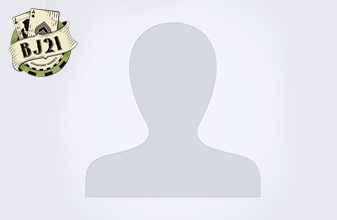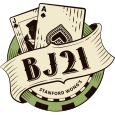


...let's just say I came across this situation once. I already know that this dealer bottom card info helps in some obvious ways (and can only be used for the Ante/Play bet - this info is useless in helping with the PairPlus bet because you don't bet against the dealer with PairPlus). One obvious way? Basic Strategy says to raise on Q-6-4 or higher. But if I've seen the dealer's bottom card, and it is a King or Ace high - you'd just never raise on anything below a King or Ace high since you know you could never win! Voila...you have just eaten into that miserable 3.4% house edge (Does it also help eat away at the 2.0% element of risk as per the Wizzard of Odds?).
What strategy adjustments do you make with this additional knowledge? Assuming I make every last strategy adjustment...what is the new house edge? Is the game now beatable?
This stuff would be nice to know - who can help? Just to let you know, this game is long gone...but it would really help if I ever find this situation again.

Purchase Beyond Counting by James Grosjean.
Regards,
MF

A couple was invited to a swanky masked Halloween party. She got a terrible headache and told her husband to go to the party alone. He, being a devoted husband, protested, but she argued and said she was going to take some aspirin and go to bed. She told him there was no need of his good time being spoiled by not going, so he took his costume and away he went.
The wife, after sleeping soundly for one hour, awakened without pain, and,since it was still early, she decided to go to the party. Since her husband did not know what her costume was, she thought she would have some fun by watching her husband to see how he acted when she was not with him.
She joined the party and soon spotted her costumed husband cavorting around on the dance floor, dancing with every nice chick he could, and copping a little feel here and a little kiss there. His wife sidled up to him and, she being a rather seductive lady herself, he left his partner high and dry and devoted his time to the new stuff that had just arrived. She let him go as far as he wished, naturally, since he was her husband. Finally, he whispered a little proposition in her ear and she agreed, so off they went to one of the cars and had sex. Just before the unmasking at midnight, she slipped off and went home, put the costume away, and got into bed, wondering what kind of explanation he would make for his behavior.
She was sitting up reading when he came in and asked him what kind of time he had. He said, "Oh, the same old thing. You know I never have a good time when you're not there." Then she asked, "Did you dance much"? He replied, "I'll tell you, I never even danced one dance. When I got there, I met Pete, Bill Brown, and some other guys, so we went into the den and played poker all evening...But, you're not gonna believe what happened to the guy I loaned my costume to!"

A problem with hole-card play currently is the emergence of the fake loader. This is a dealer who exposes his hole-card when he knows the subsequent card to come, usually gaining that information by peeking between deck segments during a riffle. In blackjack for example, a dealer might flash a 10 with his 6, only to turn over a 5. Against such a dealer the hole-card player will get slaughtered.
For a long time I dismissed reports of this technique being used as fluctuation or conspiracy theory, but I now have too much evidence in the form of statistically significant losses from hole-card team players, testimony from current and former casino employees, and testimony from the cheaters underground, where reliable sources inform me that the current price for being trained in this method is $500.
My (amateur) interpretation of the relevant NRS statutes is that this technique is perfectly legal provided the deck order is not manipulated in any way. So, like preferential shuffling, it is unethical and unscrupulous, but cannot be stopped by the Gaming Board.
Most of the instances I have heard of this being used are at blackjack, but it is easy to see how the same technique could and probably is being used at three-card poker or practically any conceivable card game.
The Commish would be well advised to watch his dealer carefully.

I was glad to see JM pipe in on this, but actually quite surprised to see that his comments were about something I had never even considered. In the case I described above from a year or so ago, I think I actually found a sloppy dealer, since like, 97% of the bottom cards he dealt were flashed.
With a truly "fair" but sloppy dealer (who's not trying anything fishy) and this hole card knowledge, my own pseudo-calculations show that the normal 2% house edge ("element of risk") on the Ante/Play changes to least a 1% edge for the player with the new proper basic strategy. Waiting "Beyond Counting" to arrive - anyone have this figure, though?

If you have 100% knowledge of one dealer card, Grosjean calculated the advantage at 3.4% 97% would be slightly less, but still very advantageous.
I have a question for you, Commish. Could you give a little detail on how that dealer was allowing the hole card to be seen? For instance, was it as he removed the deck from the shuffler, turning the deck in such a way that the bottom card was flashed? Or perhaps he tilted his wrist left or right prior to placing his cards the felt? A description would be much appreciated. Thank you.

In the case I described above from a year or so ago, I think I actually found a sloppy dealer, since like, 97% of the bottom cards he dealt were flashed.
You were fairly safe then, since fake loaders must flash only a small % of the time in order to operate within the law. But it seemed like a good time to mention this anyway.
With a truly "fair" but sloppy dealer (who's not trying anything fishy) and this hole card knowledge, my own pseudo-calculations show that the normal 2% house edge ("element of risk") on the Ante/Play changes to least a 1% edge for the player with the new proper basic strategy. Waiting "Beyond Counting" to arrive - anyone have this figure, though?
Not my speciality since the game is not offered in my country, but the 3.4% figure tour guide has given has been verified by a number of independent credible sources. Wong did a study of this which is probably still in the GC archives, and probably justifies GC membership by itself if you plan to actually do this at any point.
A hint by the way: cards may not always reappear with exactly the same frequency from hand-to-hand on this game.

That house-edge "flip", if accurate, is quite impressive. Could've had some fun if I knew what I was doing back then!
To answer your question on the way the dealer was exposing, if memory serves correctly: prior to placing cards on the felt, his wrist (while dealing with his right hand) was tilted to the right - a kind of momentary flick - giving a nice short glance.

...what you mean by this, John?
A hint by the way: cards may not always reappear with exactly the same frequency from hand-to-hand on this game.


If you would like I could recommend a Joke of the day site if you have nothing better to post. Hey by the way thanks for the loan of the costume.

although another type of BJ may have been involved, and it is definitely "gambling", IMO, just not located in a casino.
Bj21 uses cookies, this enables us to provide you with a personalised experience. More info

